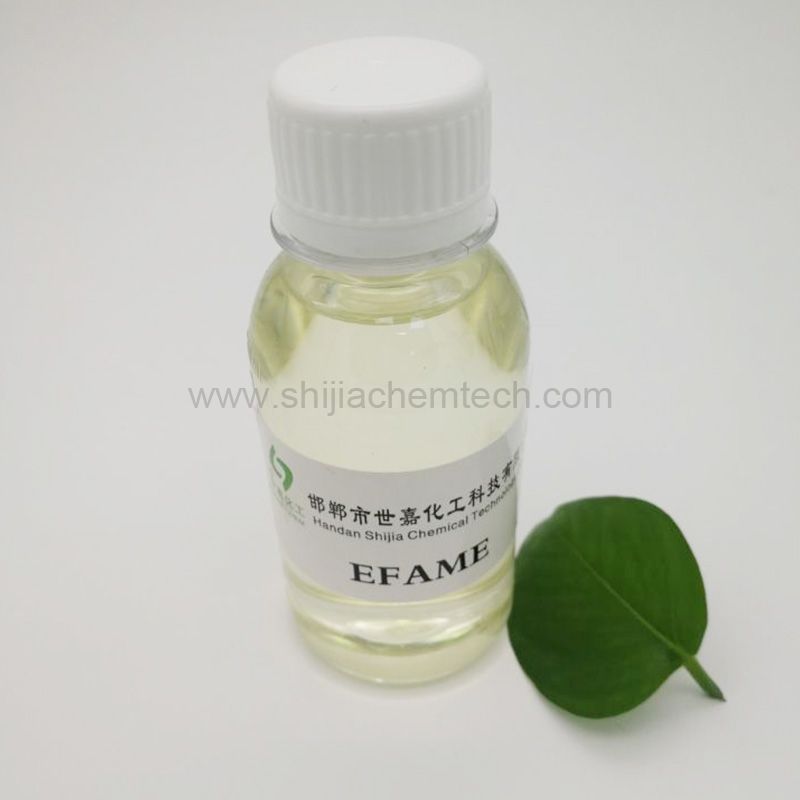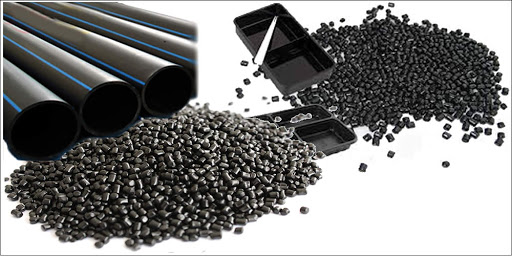Production Technology of Epoxy Soybean Oil
Posted By Handan Shijia Chemical Technology Co.ltd on 2020-06-12 1:37 AM

Description

Epoxidized Soya Bean Oil
At present, the production methods of Epoxidized soya bean oil mainly include solvent method and solvent-free method. The specific production methods mainly include peroxyformic acid oxidation method, ion exchange resin catalytic method, aluminum sulfate catalytic method, Oxycarboxylic acid oxidation method and phase transfer catalytic oxidation method.
Peroxyformic acid oxidation
In this process, benzene is used as a solvent, sulfuric acid is used as a catalyst, and formic acid and hydrogen peroxide are generated in the presence of sulfuric acid to form peroxyformic acid, and then an epoxidation reaction is carried out with soybean oil to produce epoxy soybean oil. Put soybean oil, formic acid, sulfuric acid and benzene into the reaction kettle according to a certain amount, stir and mix evenly. Under stirring, 40% (mass fraction) hydrogen peroxide solution was slowly added. During the dropwise addition, the reaction temperature was adjusted by passing cooling water and adjusting the drop acceleration, so that it was controlled around room temperature. After the addition of hydrogen peroxide is complete, stir for a while, and wait until the temperature of the material does not rise when cooling water is not passed, or even drop slightly, the stirring can be stopped. Then stand still and layer, the upper layer is the oil layer, containing products and benzene, and the lower layer is the waste acid water.
After the waste acid water is separated, the oil layer is first neutralized and washed with dilute soda ash solution of 2% to 5%, and then washed with soft water until neutral. After the water is separated, the oil layer is distilled, and the mixture of the distilled benzene and water is separated by condensation, and 80% of the benzene can be recovered and returned to the application. The kettle liquid is distilled under reduced pressure, and then filtered to obtain the finished product. The process has fast reaction speed and low temperature, but the process flow is long and complicated, the product quality is unstable, the epoxy value is about 5%, the production cost is high, the equipment is large, the "three wastes" processing capacity is large, and the solvent benzene is toxic. Methods are gradually being replaced by solvent-free methods.
Peroxycarboxylic acid oxidation
Formic acid or acetic acid and hydrogen peroxide react under the action of catalyst sulfuric acid to form an epoxidant. The epoxidant is added dropwise to soybean oil within a certain temperature range. After the reaction is completed, the product is obtained by alkaline washing, water washing, and vacuum distillation. The production process of this method is short, the reaction temperature is low, the reaction time is short, the by-products are few, and the product quality is high. At present, the production process using benzene as a solvent has basically been replaced. Since the molecular weight of formic acid is smaller than that of acetic acid, the oxidation rate of peroxyformic acid is greater than that of peroxyacetic acid. Therefore, the quality of the product obtained by formic acid production is slightly better, and the reaction process is shorter.
At present, most production enterprises use formic acid as the active oxygen carrier for epoxidation. In the use, attention should be paid to the toxicity of carbon monoxide produced by the decomposition of formic acid and some formic acid. Dalian Light Chemical Industry Research Institute carried out a study on the synthesis of epoxy soybean oil with peroxyformic acid under solvent-free conditions, and discussed the effects of the main reaction conditions on the epoxidation reaction. The technical route, process flow, process conditions and product quality of soybean oil were compared, and it was found that the solvent-free method is simpler in production process than the solvent method, without solvent recovery problems, low raw material consumption, short production cycle, and the product quality reaches the current domestic similar products. The advanced level has solved the problem of benzene solvent pollution in the production process and improved the production environment of workers. At the same time, with the cooperation of Zhangzhou Chemical Plant, Fujian Provincial Institute of Chemical Industry adopts a solvent-free one-step in-situ epoxidation process, that is, hydrogen peroxide reacts with glacial acetic acid in the presence of a catalyst to produce peracetic acid. Soybean oil reacts to obtain epoxy soybean oil. It overcomes the shortcomings of using benzene as solvent and sulfuric acid as catalyst in many synthetic steps, high product cost, large amount of "three wastes" and low yield.
The thermal stability of the epoxy soybean oil plasticizer produced by the solvent-free process is significantly improved, and the thermal stability of epoxy groups (retention rate of epoxy value) is increased from 60%-80% of the solvent process to more than 95%. At the same time, it overcomes the problems of "three wastes" pollution and corrosion of equipment and pipes. In addition, the researchers found that refining crude soybean oil with dilute ammonia-hydrogen peroxide can reduce oil loss and make the refined oil color better than the standard of edible first-grade oil; the epoxidation reaction does not use a catalyst and uses urea as the main component to stabilize The agent can shorten the epoxidation reaction time, and the crude product has a light color; using three times of water washing to remove the organic acid in the crude epoxidation, etc., replacing the alkaline washing-water washing process, it can greatly reduce the emulsification and loss of the crude product, and is beneficial to oil and water Two-phase stratification. At present, the technology has been applied in industry.
Ion exchange resin catalysis
Although the solventless method overcomes many of the deficiencies of the solvent method, it also has the disadvantages of poor reaction stability, low epoxy value of the finished product, deep color of the product, equipment corrosion and serious environmental pollution. Peroxyformic acid or acetic acid is the oxidant, and the process of synthesizing epoxy soybean oil under solvent-free conditions can overcome these shortcomings [2]. Soybean oil, ion exchange resin and acetic acid are added to the reaction kettle, and the temperature is raised to 70-80°C under heating, and hydrogen peroxide is added to the reaction kettle evenly within 40 minutes under stirring. 18h. After the reaction is completed, the ion exchange resin is filtered off, and the layer is left to stand. The oil phase is neutralized with a saturated sodium chloride aqueous solution containing 2% to 3% sodium hydroxide to be slightly alkaline (pH value reaches 8.5 to 9.0), and then Wash with pure water until it is neutral and free of chloride ions. Let stand for 30min to separate the lower water layer. The crude product after water washing is put into a distillation kettle, and dehydration under reduced pressure can be used to prepare epoxy soybean oil products.
The process is characterized by simple process, short production process, low energy consumption, less equipment investment, safe production, good product quality, free of any toxic solvents, and the shortcoming is the relatively long cyclization time. The study found that the cationic resin used can be reused. When the activity of the catalyst drops significantly, the resin is washed with 95% ethanol under reflux for 2 hours, washed with water, dried, and then pre-treated to restore the catalytic activity of the resin .
Using soybean oil as raw material, solvent-free production process, macroporous strong acid cationic resin as catalyst, and peroxyformic acid as epoxidant, PVC environmentally friendly plasticizer epoxidized soybean oil was prepared. The obtained product has the characteristics of high epoxy value, low acid value and low iodine value, and low discharge of waste water in the production process, which is beneficial to environmental protection. Using a step-by-step synthesis process of peroxidation followed by epoxidation can greatly shorten the epoxidation time, reduce the degree of side reactions, and improve production efficiency and product quality.
Aluminum sulfate catalytic method
The formic acid and hydrogen peroxide react under the action of the catalyst aluminum sulfate to form an epoxidant, and then add the epoxidant to soybean oil within a certain temperature range. After the reaction is completed, the epoxy soybean oil is obtained by alkaline washing, water washing, and vacuum distillation. The process has high reaction activity, easy post-processing, and the yield can be as high as 96%. Compared with the cation exchange resin catalytic method, the cost of the catalyst is low. The disadvantage is that the catalyst used needs to strictly control the Fe2+ content. The iron content is too high. In the presence of hydrogen peroxide, it can easily catalyze and accelerate the decomposition of hydrogen peroxide, which is not conducive to the epoxidation reaction. At the same time, Fe2+ will also cause the material temperature to rise sharply, making it difficult to control the epoxidation reaction temperature.
Phase transfer catalytic oxidation
Epoxy soybean oil was synthesized by direct epoxidation of soybean oil with 30% (mass fraction) hydrogen peroxide solution using ethyl acetate as solvent and methyl trioctyl ammonium bisulfate as phase transfer catalyst without carboxylic acid. . The experimental results show that, without carboxylic acid, using hydrogen peroxide as the oxidant can successfully achieve the epoxidation of soybean oil. The epoxy value of the product under the conditions of pH of the solution 2, reaction temperature 60 ℃, reaction time 7h It is 6.27% and the iodine value is 5.80g/100g. This method avoids the formation of peracids in the reaction, reduces the amount of by-products produced, and improves product quality.
We are the green speciality chemicals company, if you have any questions about our product knowledge, please feel free to contact us.
Tags: eco-plasticizer, eco-solvent
For more information, please Click Here

.jpg)





